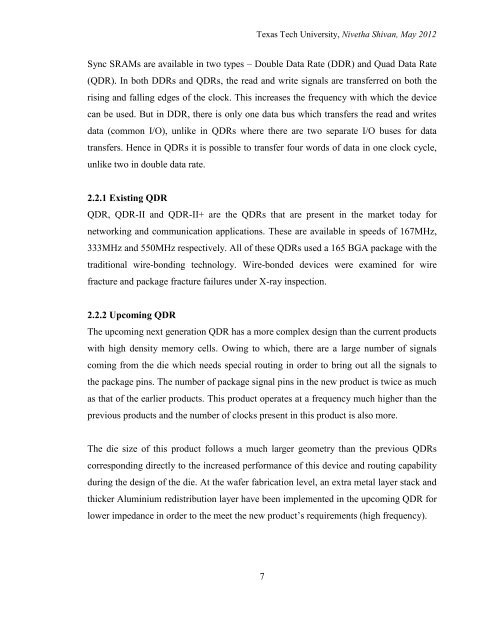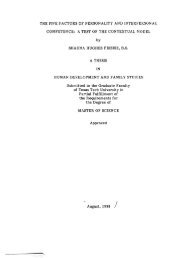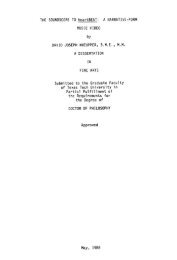Qualification of the Assembly Process of Flip-Chip BGA Packages ...
Qualification of the Assembly Process of Flip-Chip BGA Packages ...
Qualification of the Assembly Process of Flip-Chip BGA Packages ...
Create successful ePaper yourself
Turn your PDF publications into a flip-book with our unique Google optimized e-Paper software.
Texas Tech University, Nivetha Shivan, May 2012<br />
Sync SRAMs are available in two types – Double Data Rate (DDR) and Quad Data Rate<br />
(QDR). In both DDRs and QDRs, <strong>the</strong> read and write signals are transferred on both <strong>the</strong><br />
rising and falling edges <strong>of</strong> <strong>the</strong> clock. This increases <strong>the</strong> frequency with which <strong>the</strong> device<br />
can be used. But in DDR, <strong>the</strong>re is only one data bus which transfers <strong>the</strong> read and writes<br />
data (common I/O), unlike in QDRs where <strong>the</strong>re are two separate I/O buses for data<br />
transfers. Hence in QDRs it is possible to transfer four words <strong>of</strong> data in one clock cycle,<br />
unlike two in double data rate.<br />
2.2.1 Existing QDR<br />
QDR, QDR-II and QDR-II+ are <strong>the</strong> QDRs that are present in <strong>the</strong> market today for<br />
networking and communication applications. These are available in speeds <strong>of</strong> 167MHz,<br />
333MHz and 550MHz respectively. All <strong>of</strong> <strong>the</strong>se QDRs used a 165 <strong>BGA</strong> package with <strong>the</strong><br />
traditional wire-bonding technology. Wire-bonded devices were examined for wire<br />
fracture and package fracture failures under X-ray inspection.<br />
2.2.2 Upcoming QDR<br />
The upcoming next generation QDR has a more complex design than <strong>the</strong> current products<br />
with high density memory cells. Owing to which, <strong>the</strong>re are a large number <strong>of</strong> signals<br />
coming from <strong>the</strong> die which needs special routing in order to bring out all <strong>the</strong> signals to<br />
<strong>the</strong> package pins. The number <strong>of</strong> package signal pins in <strong>the</strong> new product is twice as much<br />
as that <strong>of</strong> <strong>the</strong> earlier products. This product operates at a frequency much higher than <strong>the</strong><br />
previous products and <strong>the</strong> number <strong>of</strong> clocks present in this product is also more.<br />
The die size <strong>of</strong> this product follows a much larger geometry than <strong>the</strong> previous QDRs<br />
corresponding directly to <strong>the</strong> increased performance <strong>of</strong> this device and routing capability<br />
during <strong>the</strong> design <strong>of</strong> <strong>the</strong> die. At <strong>the</strong> wafer fabrication level, an extra metal layer stack and<br />
thicker Aluminium redistribution layer have been implemented in <strong>the</strong> upcoming QDR for<br />
lower impedance in order to <strong>the</strong> meet <strong>the</strong> new product‟s requirements (high frequency).<br />
7

















